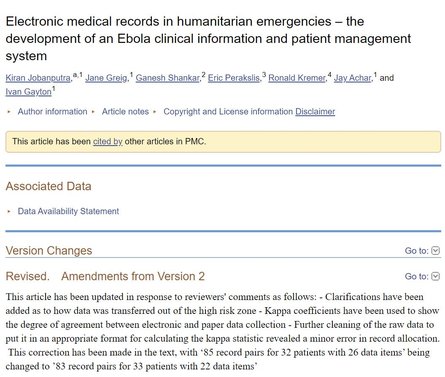
By November 2015, the West Africa Ebola epidemic had caused 28598 infections and 11299 deaths in the three countries most affected. The outbreak required rapid innovation and adaptation. Médecins sans Frontières (MSF) scaled up its usual 20-30 bed Ebola management centres (EMCs) to 100-300 beds with over 300 workers in some settings. This brought challenges in patient and clinical data management resulting from the difficulties of working safely with high numbers of Ebola patients. We describe a project MSF established with software developers and the Google Social Impact Team to develop context-adapted tools to address the challenges of recording Ebola clinical information. We share the outcomes and key lessons learned in innovating rapidly under pressure in difficult environmental conditions. Information on adoption, maintenance, and data quality was gathered through review of project documentation, discussions with field staff and key project stakeholders, and analysis of tablet data. In March 2015, a full prototype was deployed in Magburaka EMC, Sierra Leone. Inpatient data were captured on 204 clinical interactions with 34 patients from 5 March until 10 April 2015. Data continued to also be recorded on paper charts, creating theoretically identical record “pairs” on paper and tablet. 83 record pairs for 33 patients with 22 data items (temperature and symptoms) per pair were analysed. The overall Kappa coefficient for agreement between sources was 0.62, but reduced to 0.59 when rare bleeding symptoms were excluded, indicating moderate to good agreement. The time taken to deliver the product was more than that anticipated by MSF (7 months versus 6 weeks). Deployment of the tablet coincided with a dramatic drop in patient numbers and thus had little impact on patient care. We have identified lessons specific to humanitarian-technology collaborative projects and propose a framework for emergency humanitarian innovation. Time and effort is required to bridge differences in organisational culture between the technology and humanitarian worlds. This investment is essential for establishing a shared vision on deliverables, urgency, and ownership of product.